#the tailless prince
Text
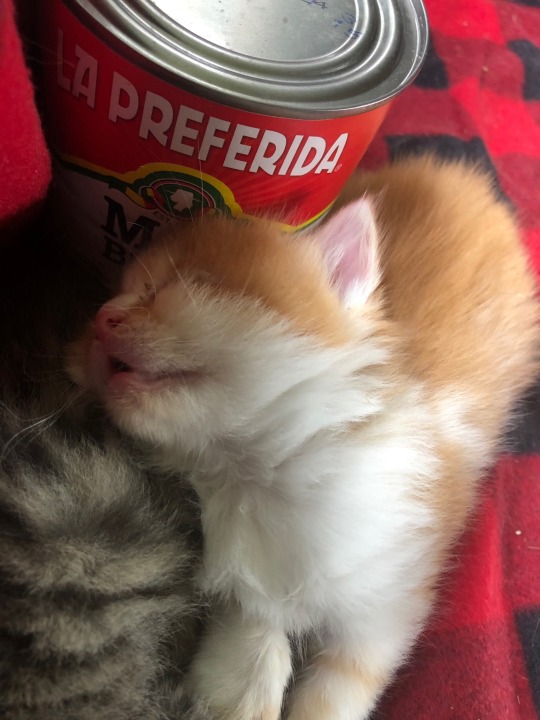
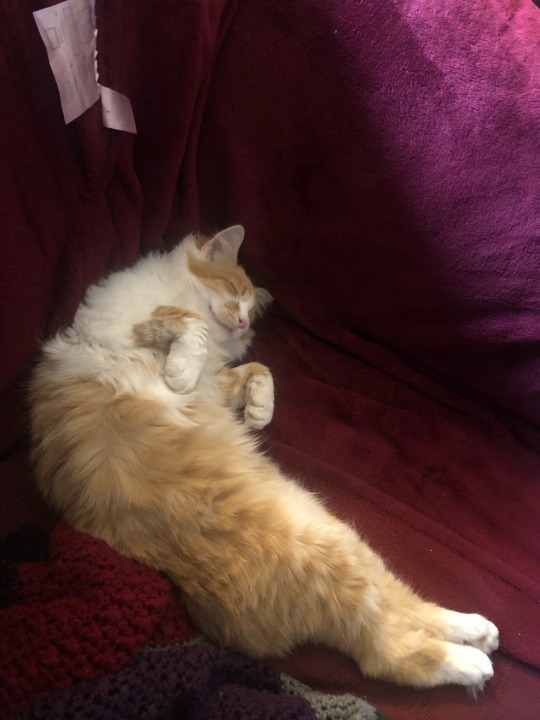
He has a history of sleeping at odd angles
#cat#orange cat#chuji butternut squash first of his name#the tailless prince#butters bane#protector of kibble#the bard of wet food#he who cannot meow
3 notes
·
View notes
Text
Prince of Death chapter 8 coming Thursday!

He was jumping to conclusions.
There wasn't any indication Max was romantically involved with Charles and he just needed to take a step back and breathe. The helpful idiot could really just be trying to serve Prince Max as a nursemaid and nothing more.
But try as he might to put his suspicions aside, Carlos continued to grumble bitterly, frustration simmering beneath the surface.
“Should’ve left the tailless freak where I found him,” he fumed, finishing his work in silence.
Read on AO3
#lestappen fic#lestappen fic rec#max verstappen#charles leclerc#lestappen#prince of death#wip#ao3 link
17 notes
·
View notes
Note
Idk if you wanted people to ask these to you or not but 7 for all your wols if you're interested?
favorite animal? why?
HMMMMMMMMMMMMM I think Ryder says shes doesnt have a favorite animal and needs to be pressed on it, but if you bother her enough she'll say it's the Tailless Whip Scorpion, because ''those fuckers are hilarious'' and she loves the way theyre entirely harmless and just GRAB at you like dorks. I think she;d often gravitate towards ''scary sounding/looking animals/insects who are literally just doing whatever'' like the Camel Spider (chases you like nuts but its bite literally doesnt do anything besides pinch) and the Tailles Whip Scorpion
youtube
for Ruyan she might also have a hard time narrowing it down, often because she doesn't really have the concept of a ''favorite'' thing like color or animal or food, there's many things she likes and she feels bad picking a single one, but i think when he grows older he does gain a fondness for sea otters :] Ruyan HATES, HATES, HATES most lovey nicknames because they make her feel wrong, so chefant started calling her his ''signifigant otter'' after seeing a particularly corny greeting card when he got to visit Limsa Lominsa as a joke, but it went from a silly inside joke between them to a nickname Ruyan genuinely really loved and it like, influenced her love for otters because seeing them hold hands or float in the water with their babies just reminds ruyan of her husband, so now if you ask ruyan her favorite animal she'd say sea otter because they remind her of her signifigant otter :]

Tock LOVES SO MANY ANIMALS but her TOP THREE FAVORITE EVER ARE

SPIDER CRAB!!! she wants to meet one so bad she thinks theyre the cuuuutest things ever. and wants them to wear multiple shoes and sunglasses. she wants to live underwater like a mermaid and marry a spider crab prince and live in a big underwater castle with her spider crab nation
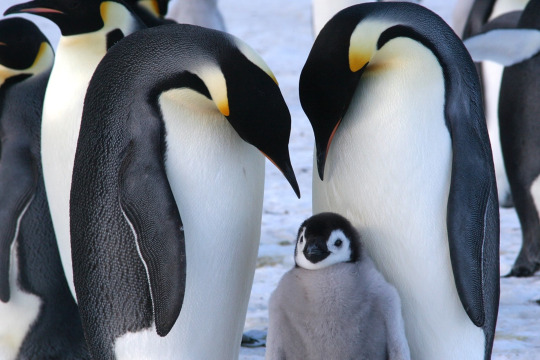
EMPORER PENGUINS!!! they remind her of urianger :] and she wants to hug one so bad

TARANTULA-HAWK WASP... she thinks these guys are like fairies and she thinks theyre soooo cool. she keeps her distance but she's rooting for them when theyre fighting tarantulas and loves watching them fly around
ALTHAEA picks no favorites. all bugs and insects are her favorite animal period. but just between you and her, she has a special fondness for T. Bisselliella
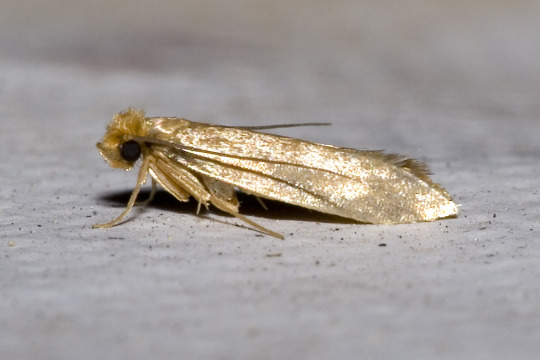
as the wikipedia article for Forensic Entomology puts it:
Moths (order Lepidoptera) specifically clothes-moths – Family Tineidae – are closely related to butterflies. Most species of moth are nocturnal, but there are crepuscular and diurnal species. During their larval stages, clothes moths tend to feed on mammalian hair.[32] They are amongst the final animals contributing to the decomposition of a corpse. This said, adult moths lay their legs on a carcass subsequently to fly larvae having had their presence on it
she also has a particular fondness for maggots in general, specifically the ones commonly used for maggot therapy (DO NOT click if you are sensitive to up front pictures of necrotic / open wounds, or bugs infesting open wounds) -- this means she has a specific love for Blowflies, as she performs maggot therapy and also watches insects like the blowflies and moths consume open flesh routinely. On one notable instance, Hades has even let her use her (named and disinfected) maggots to cleanse an open wound on his leg instead of using aether to heal it, and she has documented her findings on using insects to clean out necrotic tissue. So while she'd never claim that blowflies or cloth moths are her favorite, she does spend the most time caring for these ones :]
10 notes
·
View notes
Text
Slaaneshi daemons communicate with their tails, primarily for military purposes. These are subtle gestures of war that only the Slaaneshi daemon can pick up and understands; the servants of other gods are notably tailless, with the exception of the Daemon Princes and Younger Bloodthirsters. To a mortal, these look like subtle, languid flicks. Movements so fine they likely wouldn’t draw the eye at all.
However, for say, a Herald or Keeper or Secrets, these are marching orders and strategies. They are understood by other Slaaneshi daemons as clearly as if they’d been yelled to the masses.
9 notes
·
View notes
Note
There be a lil bit of voltron reference in this request, what whole happen or character reaction if Lion-o, Tygra, and Panthor meeting a human who is a resurcher just collecting plant data and just generally not a very good fighter but grate a defense and medical
( I like the galra uniforms and clothes, I think their neat )
Alright so you didn't specify which version of Thundercats so I'm doing a generalized combo of both the old and the newer one that ended too soon.
Human Researcher s/o (Thunder Cats)
General
S/o was minding their business. S/o was happily staying well within their own lane. Collecting samples. Setting up camp for the night. A few last minute notes here and there before calling it.
Shocked furries with swords appearing out of nowhere in a metal ship was none of their business, but the group was intent on making it s/o's business.
The only two types of people the Thundercats have ever met are furries or scalies. The naked (thankfully clothed), tailless primate is a new one for all of them.
Lion-O
Lion-o is recklessly curious and curiously reckless. Once he has gotten semi-passed them being human, he is going to involve himself in their research. What are they doing? Why are they doing it? What does that do?
Semi-passed. It's never not going to be fascinating to him that there's an entire different species of people he's never heard about before. Everything they do is astounding.
There are parts of research that he gets, especially if its technology-based, but otherwise he's got no idea what they're talking it. This is not a problem though. When one is staring lovesick like a love-struck kitten as his crush rants about their research, there's little else going on in the brain. Lion-o will gladly gave with heart eyes as they talk about different types of plants.
Protective. S/o is not going anywhere near combat. Recklessness will cause them to sometimes be in combat as Lion-o doesn't always plan accordingly, but the entire time he is glued to their side. No body is touching them.
Tygra
Humanity? Fascin- is that research data on plants? My, how... interesting. Care to share notes?
Tygra is a nerd. Chronically. Canonically. A chunk of his curiosity is going to be interested in what they are, but it is massively overshadowed by the sheer glee of being able to talk to someone who knows what the hell he is talking about. They are sharing notes. They are sharing theories. If he's not training or spending time with friends he is for sure in their lab, either chatting or partaking in the research or both.
Yes. I did say their lab. Tell me right now Tygra, prince of all nerds, wouldn't make space for them on the ship to continue their research.
Also protective like Lion-o but takes more of a dutiful knightly protector role rather than a "don't be here" approach. Ego causes his arrogance to make him believe - nay, know - that he can protect them from anything in battle.
Panthor
"Why are you so.... fleshy? Aren't you cold?" Unlike Lion-o or Tygra, Panthor does not care about the science part of s/o so much as the anatomical puzzle in front of him. He's old. He's seen a lot of shit. Scales. Fur. Maybe some feathers. Whatever the hell the Elephant folk have. This person is squishy but there's still some hair, are they bald on everywhere but their head? Why-?
His love for them stems more from wanting to keep this squishy weirdo alive rather than science. This person has no idea how to survive and while he didn't pick them to join the team, they're here so he might as well make the most of it. Cue the training montage!
Yes. Training. Protective as he is, unlike the brotherly duo of reckless 1 and reckless 2 Panthor recognizes that he's not always going to be there, and there will be times they are in danger. Hell, sometimes they might be targeted. Having a weapon couldn't hurt.
#thundercats#thundercats imagine#imagine#tygra#lion-o#panthor#this was a fun way to shake the cobwebs off the writing gears!
44 notes
·
View notes
Text
Anonymous asked: Your cool literary takes on James Bond made me want to ask you this. I have to wear a tuxedo for a special occasion, can you give me some advice? I would welcome some style pointers from you as I respect your refined taste. What are your thoughts on men wearing the tuxedo? I think it’s a dying tradition because here in the US, where the tux was invented, it has all but disappeared as the choice of evening wear for any social events. Great blog posts but I only wish you would post more.
Thank you for your kind words about my most recent posts on Ian Fleming’s James Bond and also generally liking what I post. I too wish I could post more but unfortunately my time is taken up with the reality of work and other things even during these tough times of the Covid pandemic. But when I get a moment to myself I do enjoy posting as a way to detox from the pressures of work. I appreciate your continued support.
I got this question before Christmas so the thought had occurred to me that you were asking because you had a decision to make over the festive period. If so, I am sorry for tardy lateness of my response. But I trust what little advice I can give will help you in the future.

I always remember the maxim by the fashion designer, Tom Ford, who said, “Dressing well is a form of good manners.”
To me, for a man to wear black tie (or tuxedo) is the height of good manners. It used to be the case that every gentleman had one and it was perhaps the first suit to pack into a suitcase. Perhaps one of the few times I was ever envious of my older brothers as men was accompanying them with my father the first time they went to get fitted for a bespoke black tie at Henry Poole & Co - the Savile Row tailors that had been the regular choice of my grandfather and father for their clothing attire. Although both siblings later gravitated to other Savile Row bespoke tailors as they got older, that first Henry Poole black tie lasted them for a long time. The whole ritual around taking measurements took on a hushed sacred tone of a liturgy. Looking back it felt like a rite of passage for them as they passed from boyhood to adulthood.

The choice of wearing a tuxedo epitomises the desire - among people of means and social standing - to be fresh, clean and as attractive as possible when meeting on evening social events and attending high spirits affairs. This tradition was maintained also with the beginning of the use of the automobile, when there was no practical justification.
Before the Second World War, tuxedos and tails were still considered the only appropriate clothing for all the elegant social evenings. However, after the war, the traditional suit, or the work suit, began to be accepted more on informal evening and daytime occasions, and so the use of the tuxedo was limited to just formal evening gatherings only.
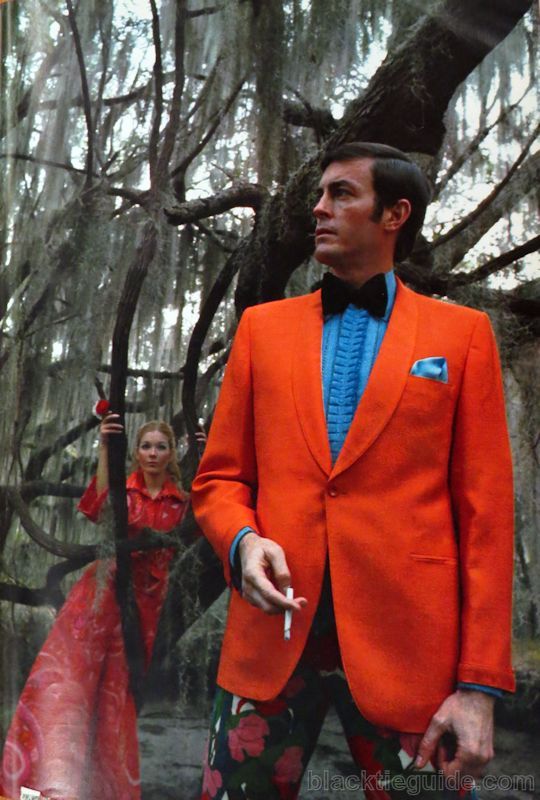
The tuxedo was completely remade in disco's image by the 1970s. A young, revolutionary generation looked at the conservative styling of the tuxedo and threw out nearly everything, keeping only the vague silhouette. Huge, floppy bow ties, colourful patterned jackets, shirts with ruffles and lace, and trousers that looked more like bell-bottoms became much more prevalent. The typical tuxedo in the '70s usually had at least two of these elements, if not all of them.
By the 1980s, a return to classic styling had thankfully re-emerged and tuxedos started looking more conservative.
By the late 2000s, as dress codes became diluted and misunderstood, formal-wear took another hit. Business-casual was the predominate dress code of the workplace and shiny black suits with matching ties had nearly supplanted traditional black-tie. Coloured dress shirts also began to trend in this era. Those who continued to wear traditional black-tie made it as simple as possible to match the casual aesthetic that a new generation preferred.
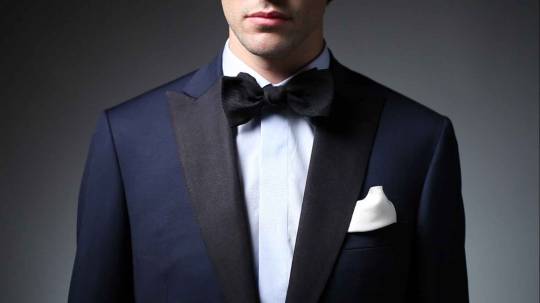
These days I think more and more young men are adopting the black-tie styles of the '30s and '40s. Midnight blue tuxedos have even made a comeback. I think high quality period dramas like "Mad Men" are at least part of the reason for the shift, with men growing nostalgic for a bygone era of neater, more crisp look.
People forget, as often as they do, that the original purpose of this elegant clothing was to replace the suit worn all day, allowing men to leave behind the dirt and smell of a day spent on horseback, not to bring it around the dining table.
These days the emphasis on informality has made it easier to make excuses for men (and women) to dress down to a street level of casual indifference (laziness) that I find aesthetically displeasing.
Moreover I find it a tad disrespectful to the sense of occasion and also an unkind ingratitude to the efforts made by the host or hostess in organising such an event. For those who think wearing black tie is a sign of social superiority, then respectfully they have not understood its true purpose. In following the dress code, it is in effect a sign of respect towards your fellow guests, as it has been put in place to ensure attendees are on the same level.
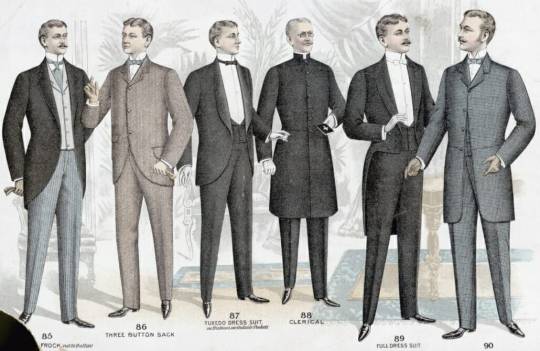
The origin of the tuxedo is a controversial subject of conversation in some circles. I know in the US it’s common to assume the tux was invented there but many have pointed out it was in England that its origins lie. Some fashion historians trace it back to the 17th Century as a tailless ‘smoking jacket’. In England during the 17th century, after dinner the gentlemen might put on a smoking jacket and retreat to a den or smoking room. Indeed in the beginning it was believed that the purpose of the ’smoking jacket’ ensured that their evening coat would not be burned by ashes nor absorb the smell of tobacco which the women found distasteful.
However these days there remain two theories about the first ever proper tuxedo that we would recognise today. In the first theory the tuxedo was invented by Pierre Lorillard IV of New York City according to one school of thought. Pierre Lorillard's family were wealthy tobacco magnates who owned country property in Tuxedo Park, just outside of New York City. At a formal ball, held at the Tuxedo Club in October 1886, the young Lorillard wore a new style of formal wear for men that he designed himself. He named his tailless black jacket the tuxedo after Tuxedo Park. The tuxedo caught on and became fashionable as formal wear for men.
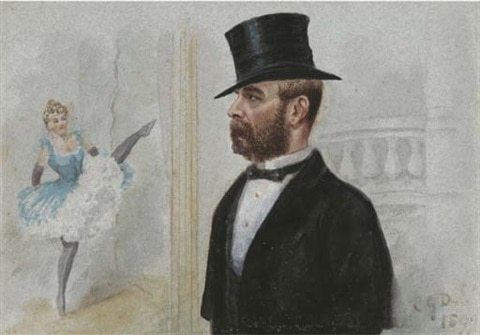
The second theory, according to English clothing historian James Laver, has it that the idea of wearing black for evening wear was first introduced by the 19th Century British writer, Edward Bulwer-Lyttonn who wrote in 1828 that "people must be very distinguished to look well in black." It was only until later in the century that a village resident of Tuxedo Park, New York, James Brown Potter vacationed in England in the summer of 1886. Potter and his wife, Cora were introduced to the Prince of Wales {who later became King Edward VII} at a court ball in London. Potter asked the Prince for advice on formal dress. The Prince sent Potter to his own Saville Row tailor, Henry Poole & Co. Potter was fitted with a short black jacket and black tie that was unlike the formal tails with white tie that was worn in the United States for formal occasions.
The new tailless formal wear was said to have been designed by the Prince of Wales. It was Edward VII who in 1865 commissioned to his tailor Henry Poole to create a short blue evening jacket (midnight blue), to be used for informal evenings in his country estate of Sandringham. The Prince and his tailor drew inspiration from the British military uniforms of the time, which used short jackets with black ties.
This is where the two origins meet. James Brown Potter took the design back to the Tuxedo Club, where Pierre Lorillard modified it, named it, and made it popular during the Autumn ball. And so from that blessed bespoke collaboration between the Prince and Henry Poole & Co was born the ancestor of what everyone call today as tuxedos, the English ‘dinner jacket’ and the Americans ‘tuxedo’ - because of its original word spread starting from the homonymous village of Tuxedo Park.
Whatever the exact truth of its origin, black tie remains the evening attire par excellence. I’m flattered that anyone should ask me for style tips, especially regarding grooming and clothing for men.

I like to think that the true purpose of a man wearing black tie was to help the man show the humility to be an unassuming gentleman in effortlessly blending into the background so that his female companion could shine more by his side. A man in black tie was a gentleman who stood steadfastly there with an outstretched arm to make women feel more beautiful, but also to reassure them that all is right in the world.
If you get the opportunity to wear black tie then do please take it. The fact that you desire to wear one is already a great choice that makes you stand out from the loud bling-bling hoi polloi. But please don’t confuse wearing a black tie with snobbery. It isn’t, it’s just good manners. Manners maketh man as they say and so it’s not something one is born with but can only be learned. And don’t confuse fashion for style. The two are very different. Fashion is what you copy from others and style is what you express about yourself. Don’t conform to the passing fancies of the day (the loud, the garish, the attention seeking), or as Coco Chanel put it, ‘elegance is refusal’.
Always remember that style is a way to say who you are without having to speak.
In theory, the elegance of the tuxedo stems from its simplicity - it’s an ultimate classic, the one outfit one doesn’t mess around with. In practice, many men find the rules governing this suit and its accoutrements to be annoyingly complex and complexly annoying.
My basic rule for men is ‘kiss’ - Keep It Simple, Stupid.
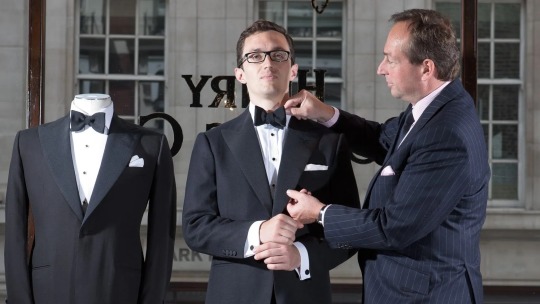
Rule 1: Buy, don’t rent
It’s better if the black tie that you have is yours, and not rented. For one thing it’s a question of comfortability. You’ll be comfortable in your skin if you’re more comfortable in a suit that actually fits. Secondly, a rental doesn’t mean it’s good quality. The fabric is an important consideration.
In an ideal world you should get a bespoke tailored black tie made - ideally from any of the excellent tailors on Savile Row. But not all tailors are equal. Henry Poole & Co would be the traditional choice. I know for my older brothers they prefer Gieves & Hawkes and Huntsman because they have a more military draped cut, traditional but not stuffy.
In the long run it’s a once in a lifetime worthy investment if you take in consideration the cost of each potential rental along with how many times you would be wearing one throughout the coming years.
But I understand for many that may be an impossible proposition. The next best thing is to get a less expensive ‘made-to-measure’ black tie which is an increasing and welcome avenue for men to still have a suit or black tie made to fit them.
I would hesitate recommending buying off the peg because many high street brands have a rather relaxed attitude to tailoring and quality. If you must buy off the peg or rent then make sure the fabric is wool.
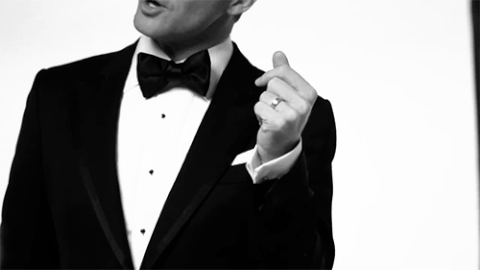
Rule 2: Black or Midnight blue and no other colour
Your black tie should be, to state the obvious, black. Not only is it the correct choice, it is the stylish choice. You can never go wrong with black. But if you’re feeling a tad adventurous go with Midnight blue. Midnight blue, being blacker than black, is not merely an exception to the rule but an exceptional choice for shimmering with distinction under the moonlight.
But what about white dinner jacket so beloved of James Bond or Indiana Jones? Yes, quite.

Traditionally, white was worn in place of a traditional black suit to deflect heat. This made it the perfect alternative for black-tie events that were held in the afternoon, during the Summer or at sea. The white jacket variation of black tie began was adopted in the early 1930s as a way for well-heeled vacationers to dress formally in the tropical heat without having to endure the heavy and dark-coloured fabrics that were standard for evening wear at the time.
While dinner suits have become much more lightweight since then, the light-coloured jacket has remained a popular warm-weather alternative to its ebony progenitor. However, without a proper understanding of its form and function, the white dinner jacket easily becomes a flashy gimmick. Subtlety and restraint are the keys to the successful execution of this classic variation.
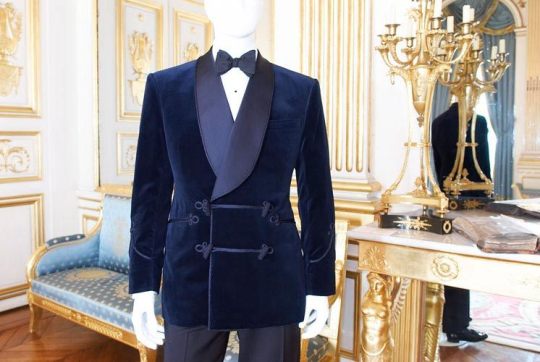
Avoid other colours like the plague. I do notice from time to time in the shop windows here in Paris (as well as London and elsewhere) that some menswear boutiques display bright coloured dinner jackets.
Usually it’s the Italians (like Canali and Brunello Cucinelli who give in to their worst Italian impulses to show off their peacock flair) and others who really should know better (yes, the wine red velvet dinner jacket is very fetching but it belongs by log side fire, a cigar, and a cognac, so thank you Tom Ford). I even think some of them look nice and charming but it’s not black tie.
Besides a non-traditional black tie will be much more vulnerable to the whims of passing fashion where as traditional unfussy black tie can give peace of mind that it will never go out of style and thus will last longer.

Rule 3: Put yourself in a straight jacket
The first thing to decide is single or double-breasted and number of buttons. A safe and elegant option is one-button single breast which is both timeless and classical. Two buttons are fine, worn with the lower button undone. Double-breasted styles of any button configuration are also appropriate, but keep in mind that double-breasted jackets add some ‘bulk’ to the body. So take a hard look at your body type before you decide which one best flows off your shoulders. The buttons should be fabric-covered.
Hand in hand with the button style goes the lapel. The classic, formal option is peak lapel. Shawl lapel is somewhat less formal, but perfectly suitable. Shawl has become very popular, especially in slim versions. Notch lapels are frequently seen on off-the-rack tuxedos, but this is a more casual style, which should be reserved for suits. My preference would be to go for the peak lapel but make them sufficiently wide and not too slim.
The jacket was traditionally without vents, to keep seams (i.e. details) to a minimum, but double vents are also acceptable, providing comfort and movement. The pockets should be straight piped (slit without flap) and there should be a breast pocket.

Rule 4: Trousers, brace yourself
The trousers are ideally made without pleats or cuffs, with straight pockets following the side seam, in order to make them less visible. Black tie attire should never be worn with belts, so skip the belt loops. Traditionally one would use suspenders (braces) as it straightens the body shape as well as holds up the trousers. Choose black or white braces in fabric, rather than in leather, or in any case they should be matching the colour of the tuxedo. But I should note that side-fasteners are also a convenient option for some flexibility in the waist. The front closure should be clip-only, avoiding the button. Classically, the trousers will have a satin silk stripe covering the outer side seam on each leg, matching the lapel facing. This is a lovely detail, but nowadays sometimes considered old-fashioned. For this reason alone I would insist on it.

Rule 5: Don’t get shirty
The shirt should be plain white cotton, with a few distinct features. It should always have a ‘bib’ running down to front, which provides starchy stiffness (i.e. a higher level of formality). I’ve seen shirts in which vertical pleats in matching fabric are designed. I think they look plain and boring. Similarly if someone suggests to you a fly-front placket panel that covers the buttons and leaves a clean look then walk away immediately. Both these kind of shirts are for the lazy because they both want to avoid having to deal with those troublesome studs where the buttons would be.
I would advise always make sure your shirt has a starch like ‘bib’ that is attached made up of a textured pique fabric (pin dots), usually called Marcella. They look so much more elegant and classy.
Many would say that collar can be a normal Kent variety or a wing collar, which has little points turned down where the collar wings would be, but otherwise exposing the collar band. I personally think a wing collar is subject to whims of fashion and something best left in a 1920s set movie. Some can wear them very well (see Paul Newman in The Sting) but it depends on the girth of your neck. I think the wing collar can portray a man’s neck in an unflattering way.
I think the normal Kent collar is cleaner and classical, and it will never go out of style. The Duke of Windsor made the Kent collar hugely popular in his prime.
The cuffs should be double (French cuff), to accommodate cufflinks.
Many people also forego the buttons on evening shirts, instead leaving holes where you can attach studs (often matched with the cufflinks). If you are going to do that make sure that they’re mother of pearl studs.
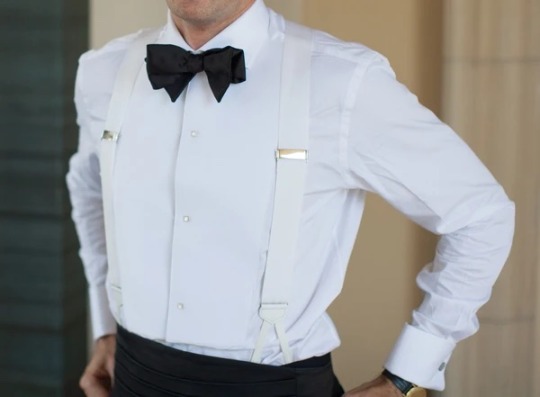
Rule 6: Accessories are in the details
The shirt should not be visible at the waist, which calls for a something covering the gap between trousers and jacket, unless you opted for a double-breasted jacket. Traditionally, this is non-negotiable, but these days you often see people wearing no waist covering. My advice is unless you’re wearing a double breasted black tie (for which there is no need to wear a cummerbund) then always wear a cummerbund with a single breasted black tie.
You either use a cummerbund matching the bow tie (a cummerbund folds upwards, for convenient opera ticket storage) or a waistcoat. Please don’t commit the faux pas of making your cummerbund a colour other than black. Often people match their bow ties to their cummerbunds in garish bright colours which just defeats the object of why one wears black tie in the first place.

For the waistcoat, there are a few style options. Often, black tie waistcoats will have a rounded (horseshoe) cut with shawl lapels but a regular cut waistcoat is also acceptable. The key is to go simple and match the jacket fabric, facing and buttons. The back can be wool or lining, where we’d recommend the latter, to make the ensemble cooler. A stylish fob watch with chain would be a nice little detail that one can drop without telegraphing it loudly.
Consider having a white silk pocket square. You can fold it any way you like, but the so-called straight presidential fold is simple and sharp looking.
Socks must be knee length. Make them black. Again, the principle is one of clean lines and elegance. Disruptions below the trouser leg - stripes, shins, whatever - threaten to ruin the whole effect.
Shoes. Your shoes must always shine. This is one detail many men neglect. The shoes should be black patent leather. My preference would be for high quality Oxfords. I know some purists would insist that only opera pumps walk the one true path, but it is obvious on its face that those precious ribboned things, also called court shoes, are not completely in step with modern life. I know too that bit-toe loafers (thank you Tom Ford) are also more of the modern rage but I find them a little effeminate. So while I don’t see it as a style concession I do think Oxfords shined to a high sheen is the modern and best choice I would opt for a gentleman to go for. To me being comfortable in your shoes is also an equal and valid consideration.
Cufflinks and studs should be simple and classic, luxury metals and mother-of-pearl or onyx insets are nice touches. I know some punt for more personalised cuff links - like their regimental or college or some other institutional affiliation - and there is nothing wrong with that but I am on the fence about this. Generally I would leave that for your day time business suits. Showing off defeats the ethos of wearing the black tie in the first place.

Rule 7: ‘Sprezzatura’ up your bow tie
‘Sprezzatura’ is a gorgeous Italian word - first appearing in Baldassare Castiglione's The Book of the Courtier in 1528 - that means a disheveled elegance by way of studied carelessness. This perfectly sums up how one should wear the centre piece of the black tie - the bow tie.
Don’t be taken in by the very modern fad - thank you Hollywood and modern music pop stars - of wearing long neck ties (even if they are in black) as part of your black tie attire. Just don’t. It doesn’t matter how swish you may look you still are a prat for not dressing in real black tie.
Plain black silk and entirely self-tied. That’s a real bow tie.
Anyone and his dog can always identify a pre-tied bow tie by the fact that it's just a little too studied. Perfectly straight, perfectly symmetrical, and perfectly balanced. Just like plastic surgery, clip-on bow ties just look too perfect to be real. It is one of the most obvious signs that you're a style amateur.
Avoid pre-tied bow ties (and its ugly sibling the stick-on bow tie) like the plague....unless you’re a child who is unable to tie his own bow tie.
But what if you don’t know how to tie a real bow tie? It’s never too late to learn. It’s the same level of difficulty as tying your shoes. If you don’t know ask someone who does know. If you’re buying a bespoke tailored black tie the tailor would most definitely show you how to do it. Easy peasy.
Remember bow ties are supposed to be imperfect and worn. That’s what makes the wearer authentic.
Perfect symmetry is not a goal worth pursuing here. Being an elegant gentleman is.

And that’s it. Those would be my informal rules for any man wanting to be a gentleman wearing black tie for a special occasion.
Thanks for your question.
#question#ask#black tie#tuxedo#dinner jacket#menswear#fashion#style#bespoke#savile row#gentlemen#culture#personal#henry poole#bow tie#monarchy#edward VII#etiquette
96 notes
·
View notes
Text

image scource linked.
there was nothing like a good fight to goku.
adrenaline pumping, the throbbing of an excited heart. the crash of ki beams hitting and clashing fists and shins in a fury of madness with one common goal of to gain the most power possible was music to the saiyan's ears.
it was a thrill, hair flowing in the wind as he stayed in his baseform careful not to blow up the briefs' private vacation island. he glided back, soles of his feet grazing the surface of the glistening blue ocean that crashed and gurgled beneth the two sparring saiyans.
it was something special goku and vegeta had, the ability to fight and spar each other. vegeta himself would never admit it, he would most likely say it was his way of making sure he'd get his way to number one, or his way to get his anger out on kakarot.
goku knew it was more than that, but he would never say that. it was an unspoken agreement to not speak of it, something special the two of them had. call it a saiyan bond, perhaps.
goku noticed those smirks and smiles when goku defended a punch by vegeta's gloved hands with crossed arms in his signature defense pose.
the fight with frieza, the androids, cell, buu, beerus, the 6th universe, the 9th universe, jiren and top, moro... up until this moment all of those fights made the tailless saiyan stronger and happier to be alive.
he's proud of his sons, he loves his wife, his friends, vegeta and broly even in a saiyan way. this is his home, and no one is fucking with it again. no more tampering,
he smiled, slowly floating down to the cemented sidewalk of the island next to the flowerbeds next to vegeta. "hey vegeta." he looks over to the spikey haired saiyan. vegeta opens one eye, sweat towel laid haphazardly over his shoulders. "what is it, kakarot?" he grunts, looking over.
"do you really try to fight for redemption?" he asks curiously to the shorter yet older male. goku's arms stay folded and behind his head, looking up at the white natural clouds up in the brilliant earthen sky. needless to say, vegeta was caught off guard. he wasn't expecting a question like that from kakarot, the airhead not really having much brain in there asking him a question like that, but it was in relation to fighting to perhaps it was something the younger saiyan could wrap his head around.
tense, vegeta sighs and relaxes his muscles. he looks up at the clouds as well. he crosses his arms, in similar fashion to when the battle of the gods happened, goku and beerus sparring high in the atmosphere of earth. "what's it to you?" he grumpily asks. and goku had thought he'd actually answer.
"during the fight with moro! piccolo pointed it out, why can't you tell me?" the childish adult whines, upset vegeta won't give a straight answer.
"kakarot, you're aware of all the things i've done. my redemption to right those wrongs will take years of fighting. being majin... wasn't exactly the best experience." vegeta growls out at him, glaring daggers but they aren't angry ones. if he could point them at himself he would, and goku knew that - making him frown slightly. "well i forgive you vegeta. you've made it plenty clear y'here to protect earth!" he smiles, trying to be cheery.
he knew vegeta would just call him naïve, dumb, and idiot even but to his surprise the saiyan prince looked down then away, arms still crossed in a pout. he glanced back, eyeing kakarot's genuine smile. he let out a "tch" and walked away.
"well, bye 'geta! i gotta see goten and spend time with him." goku rose up into the air, shooting off into the distance to his mountain home, leaving a white streak of ki fade off behind him. spending time with his youngest sounded nice right now, the laughter and happy yelling of "dad!" when he walks in the door was the ultimate reward of a long life of defending the ones he loved against evil.

#short story#dragon ball super#dbs#post-moro#cell mention#buu mention#frieza mention#beerus mention#goku#kakarot#vegeta#vegeta iv#prince vegeta#men being men#saiyan men being dudes#its a sweet time#goku is being nice to vegeta#goku and vegeta#dragon ball#dbz
22 notes
·
View notes
Note
your cat is so cute omg
Thank you! He’s our little tailless prince :)
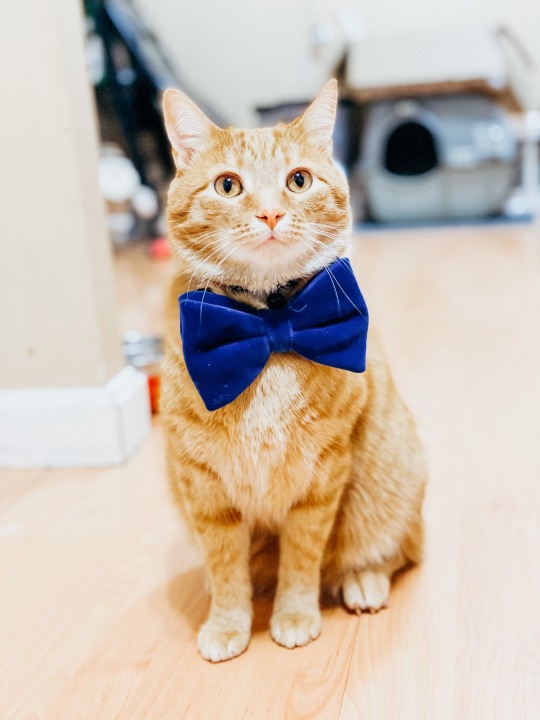
6 notes
·
View notes
Text
As the years passed, I learned to think of dreams as an integral part of life. There are dreams that, because of their sensory intensity, their realism or precisely their lack of realism, deserve to be introduced into autobiography, just as much as events that were actually lived through. Life begins and ends in the unconscious; the actions we carry out while fully lucid are only little islands in an archipelago of dreams. No existence can be completely rendered in its happiness or its madness without taking into account oneiric experiences. It’s Calderón de la Barca’s maxim reversed: it’s not a matter of thinking that life is a dream, but rather of realizing that dreams are also a form of life. It is just as strange to think, like the Egyptians, that dreams are cosmic channels through which the souls of ancestors pass in order to communicate with us, as to claim, as some of the neurosciences do, that dreams are a “cut-and-paste” of elements experienced by the brain during waking life, elements that return in the dream’s REM phase, while our eyes move beneath our eyelids, as if they were watching. Closed and sleeping, eyes continue to see. Therefore, it is more appropriate to say that the human psyche never stops creating and dealing with reality, sometimes in dreams, sometimes in waking life.
Whereas over the course of the past few months my waking life has been, to use the euphemistic Catalan expression, “good, so long as we don’t go into details,” my oneiric life has had the power of a novel by Ursula K. Le Guin. During one of my recent dreams, I was talking with the artist Dominique González-Foerster about my problem of geographic dislocation: after years of a nomadic life, it is hard for me to decide on a place to live in the world. While we were having this conversation, we were watching the planets spin slowly in their orbits, as if we were two giant children and the solar system were a Calder mobile. I was explaining to her that, for now, in order to avoid the conflict that the decision entailed, I had rented an apartment on each planet, but that I didn’t spend more than a month on any one of them, and that this situation was economically and physically unsustainable. Probably because she is the creator of the Exotourisme project, Dominique in this dream was an expert on extraterrestrial real-estate management. “If I were you, I’d have an apartment on Mars and I’d keep a pied-à-terre on Saturn,” she was saying, showing a great deal of pragmatism, “but I’d get rid of the Uranus apartment. It’s much too far away.”
Awake, I don’t know much about astronomy; I don’t have the slightest idea of the positions or distances of the different planets in the solar system. But I consulted the Wikipedia page on Uranus: it is in fact one of the most distant planets from Earth. Only Neptune, Pluto, and the dwarf planets Haumea, Makemake, and Eris are farther away. I read that Uranus was the first planet discovered with the help of a telescope, eight years before the French Revolution. With the help of a lens he himself had made, the astronomer and musician William Herschel observed it one night in March in a clear sky, from the garden of his house at 19 New King Street, in the city of Bath. Since he didn’t yet know if it was a huge star or a tailless comet, they say that Herschel called it “Georgium Sidus,” the Georgian Star, to console King George III for the loss of the British colonies in America: England had lost a continent, but the King had gained a planet. Thanks to Uranus, Herschel was able to live on a generous royal pension of two hundred pounds a year. Because of Uranus, he abandoned both music and the city of Bath, where he was a chapel organist and director of public concerts, and settled in Windsor so that the King could be sure of his new conquest by observing it through a telescope. Because of Uranus, they say, Herschel went mad, and spent the rest of his life building the largest telescope of the eighteenth century, which the English called “the monster.” Because of Uranus, they say, Herschel never played the oboe again. He died at the age of eighty-four: the number of years it takes for Uranus to go around the sun. They say that the tube of his telescope was so wide that the family used it as a dining hall at his funeral.
Uranus is what astrophysicists call a “gas giant.” Made up of ice, methane, and ammonia, it is the coldest planet in the solar system, with winds that can exceed nine hundred kilometers per hour. In short, the living conditions are not especially suitable. So Dominique was right: I should leave the Uranus apartment.
But dream functions like a virus. From that night forward, while I’m awake, the sensation of having an apartment on Uranus increases, and I am more and more convinced that the place I should live is over there.
For the Greeks, as for me in this dream, Uranus was the solid roof of the world, the limit of the celestial vault. Uranus was regarded as the house of the gods in many Greek invocation rituals. In mythology, Uranus is the son that Gaia, the Earth, conceived alone, without insemination or coition. Greek mythology is at once a kind of retro sci-fi story anticipating in a do-it-yourself way the technologies of reproduction and bodily transformation that will appear throughout the twentieth and twenty-first centuries; and at the same time a kitschy TV series in which the characters give themselves over to an unimaginable number of relationships outside the law. Thus Gaia married her son Uranus, a Titan often represented in the middle of a cloud of stars, like a sort of Tom of Finland dancing with other muscle-bound guys in a techno club on Mount Olympus. From the incestuous and ultimately not very heterosexual relationships between heaven and earth, the first generation of Titans were born, including Oceanus (Water), Chronos (Time), and Mnemosyne (Memory) … Uranus was both the son of the Earth and the father of all the others. We don’t quite know what Uranus’s problem was, but the truth is that he was not a good father: either he forced his children to remain in Gaia’s womb, or he threw them into Tartarus as soon as they were born. So Gaia convinced one of her children to carry out a contraceptive operation. You can see in the Palazzo Vecchio in Florence the representation that Giorgio Vasari made in the sixteenth century of Chronos castrating his father Uranus with a scythe. Aphrodite, the goddess of love, emerged from Uranus’s amputated genital organs … which could imply that love comes from the disjunction of the body’s genital organs, from the displacement and externalization of genital force.
This form of nonheterosexual conception, cited in Plato’s Symposium, was the inspiration for the German lawyer Karl Heinrich Ulrichs to come up with the word Uranian [Urning] in 1864 to designate what he called relations of the “third sex.” In order to explain men’s attraction to other men, Ulrichs, after Plato, cut subjectivity in half, separated the soul from the body, and imagined a combination of souls and bodies that authorized him to reclaim dignity for those who loved against the law. The segmentation of soul and body reproduces in the domain of experience the binary epistemology of sexual difference: there are only two options. Uranians are not, Ulrich writes, sick or criminal, but feminine souls enclosed in masculine bodies attracted to masculine souls.
This is not a bad idea to legitimize a form of love that, at the time, could get you hanged in England or in Prussia, and that, today, remains illegal in seventy-four countries and is subject to the death penalty in thirteen, including Nigeria, Pakistan, Iran, and Qatar; a form of love that constitutes a common motive for violence in family, society, and police in most Western democracies.
Ulrichs does not make this statement as a lawyer or scientist: he is speaking in the first person. He does not say “there are Uranians,” but “I am a Uranian.” He asserts this, in Latin, on August 18, 1867, after having been condemned to prison and after his books have been banned by an assembly of five hundred jurists, members of the German Parliament, and a Bavarian prince—an ideal audience for such confessions. Until then, Ulrichs had hidden behind the pseudonym “Numa Numantius.” But from that day on, he speaks in his own name, he dares to taint the name of his father. In his diary, Ulrichs confesses he was terrified, and that, just before walking onto the stage of the Grand Hall of the Odeon Theater in Munich, he had been thinking about running away, never to return. But he says he suddenly remembered the words of the Swiss writer Heinrich Hössli, who a few years before had defended sodomites (though not, however, speaking in his own name): “Two ways lie before me,” Hössli wrote, “to write this book and expose myself to persecution, or not to write it and be full of guilt until the day I am buried. Of course I have encountered the temptation to stop writing … But before my eyes appeared the images of the persecuted and the wretched prospect of such children who have not yet been born, and I thought of the unhappy mothers at their cradles, rocking their cursed yet innocent children! And then I saw our judges with their eyes blindfolded. Finally, I imagined my gravedigger slipping the cover of my coffin over my cold face. Then, before I submitted, the imperious desire to stand up and defend the oppressed truth possessed me … And so I continued to write with my eyes resolutely averted from those who have worked for my destruction. I do not have to choose between remaining silent or speaking. I say to myself: speak or be judged!”
Ulrichs writes in his journal that the judges and Parliamentarians seated in Munich’s Odeon Hall cried out, as they listened to his speech, like an angry crowd: End the meeting! End the meeting! But he also notes that one or two voices were raised to say: Let him continue! In the midst of a chaotic tumult, the President left the theater, but some Parliamentarians remained. Ulrichs’s voice trembled. They listened.
But what does it mean to speak for those who have been refused access to reason and knowledge, for us who have been regarded as mentally ill? With what voice can we speak? Can the jaguar or the cyborg lend us their voices? To speak is to invent the language of the crossing, to project one’s voice into an interstellar expedition: to translate our difference into the language of the norm; while we continue, in secret, to practice a strange lingo that the law does not understand.
So Ulrichs was the first European citizen to declare publicly that he wanted to have an apartment on Uranus. He was the first mentally ill person, the first sexual criminal to stand up and denounce the categories that labeled him as sexually and criminally diseased.
He did not say, “I am not a sodomite.” On the contrary, he defended the right to practice sodomy between men, calling for a reorganization of the systems of signs, for a change of the political rituals that defined the social recognition of a body as healthy or sick, legal or illegal. He invented a new language and a new scene of enunciation. In each of Ulrichs’s words addressed from Uranus to the Munich jurists resounds the violence generated by the dualist epistemology of the West. The entire universe cut in half and solely in half. Everything is heads or tails in this system of knowledge. We are human or animal. Man or woman. Living or dead. We are the colonizer or the colonized. Living organism or machine. We have been divided by the norm. Cut in half and forced to remain on one side or the other of the rift. What we call “subjectivity” is only the scar that, over the multiplicity of all that we could have been, covers the wound of this fracture. It is over this scar that property, family, and inheritance were founded. Over this scar, names are written and sexual identities asserted.
On May 6, 1868, Karl Maria Kertbeny, an activist and defender of the rights of sexual minorities, sent a handwritten letter to Ulrichs in which for the first time he used the word homosexual to refer to what his friend called “Uranians.” Against the antisodomy law promulgated in Prussia, Kertbeny defended the idea that sexual practices between people of the same sex were as “natural” as the practices of those he calls—also for the first time—“heterosexuals.” For Kertbeny, homosexuality and heterosexuality were just two natural ways of loving. For medical jurisprudence at the end of the nineteenth century, however, homosexuality would be reclassified as a disease, a deviation, and a crime.
I am not speaking of history here. I am speaking to you of your lives, of mine, of today. While the notion of Uranianism has gone somewhat astray in the archives of literature, Kertbeny’s concepts would become authentic biopolitical techniques of dealing with sexuality and reproduction over the course of the twentieth century, to such an extent that most of you continue to use them to refer to your own identity, as if they were descriptive categories. Homosexuality would remain listed until 1975 in Western psychiatric manuals as a sexual disease. This remains a central notion, not only in the discourse of clinical psychology, but also in the political languages of Western democracies.
When the notion of homosexuality disappeared from psychiatric manuals, the notions of intersexuality and transsexuality appear as new pathologies for which medicine, pharmacology, and law suggest remedies. Each body born in a hospital in the West is examined and subjected to the protocols of evaluation of gender normality invented in the fifties in the United States by the doctors John Money and John and Joan Hampson: if the baby’s body does not comply with the visual criteria of sexual difference, it will be submitted to a battery of operations of “sexual reassignment.” In the same way, with a few minor exceptions, neither scientific discourse nor the law in most Western democracies recognizes the possibility of inscribing a body as a member of human society unless it is assigned either masculine or feminine gender. Transsexuality and intersexuality are described as psychosomatic pathologies, and not as the symptoms of the inadequacy of the politico-visual system of sexual differentiation when faced with the complexity of life.
How can you, how can we, organize an entire system of visibility, representation, right of self-determination, and political recognition if we follow such categories? Do you really believe you are male or female, that we are homosexual or heterosexual, intersexed or transsexual? Do these distinctions worry you? Do you trust them? Does the very meaning of your human identity depend on them? If you feel your throat constricting when you hear one of these words, do not silence it. It’s the multiplicity of the cosmos that is trying to pierce through your chest, as if it were the tube of a Herschel telescope.
Let me tell you that homosexuality and heterosexuality do not exist outside of a dualistic, hierarchical epistemology that aims at preserving the domination of the paterfamilias over the reproduction of life. Homosexuality and heterosexuality, intersexuality and transsexuality do not exist outside of a colonial, capitalist epistemology, which privileges the sexual practices of reproduction as a strategy for managing the population and the reproduction of labor, but also the reproduction of the population of consumers. It is capital, not life, that is being reproduced. These categories are the map imposed by authority, not the territory of life. But if homosexuality and heterosexuality, intersexuality and transsexuality, do not exist, then who are we? How do we love? Imagine it.
Then, I remember my dream and I understand that my trans condition is a new form of Uranism. I am not a man and I am not a woman and I am not heterosexual I am not homosexual I am not bisexual. I am a dissident of the sex-gender system. I am the multiplicity of the cosmos trapped in a binary political and epistemological system, shouting in front of you. I am a Uranian confined inside the limits of techno-scientific capitalism.
Like Ulrichs, I am bringing no news from the margins; instead, I bring you a piece of horizon. I come with news of Uranus, which is neither the realm of God nor the sewer. Quite the contrary. I was assigned a female sex at birth. They said I was lesbian. I decided to self-administer regular doses of testosterone. I never thought I was a man. I never thought I was a woman. I was several. I didn’t think of myself as transsexual. I wanted to experiment with testosterone. I love its viscosity, the unpredictability of the changes it causes, the intensity of the emotions it provokes forty-eight hours after taking it. And, if the injections are regular, its ability to undo your identity, to make organic layers of the body emerge that otherwise would have remained invisible. Here as everywhere, what matters is the measure: the dosage, the rhythm of injections, the order of them, the cadence. I wanted to become unrecognizable. I wasn’t asking medical institutions for testosterone as hormone therapy to cure “gender dysphoria.” I wanted to function with testosterone, to experience the intensity of my desire through it, to multiply my faces by metamorphosing my subjectivity, creating a body that was a revolutionary machine. I undid the mask of femininity that society had plastered onto my face until my identity documents became ridiculous, obsolete. Then, with no way out, I agreed to identify myself as a transsexual, as a “mentally ill person,” so that the medico-legal system would acknowledge me as a living human body. I paid with my body for the name I bear.
By making the decision to construct my subjectivity with testosterone, the way the shaman constructs his with plants, I take on the negativity of my time, a negativity I am forced to represent and against which I can fight only from this paradoxical incarnation, which is to be a trans man in the twenty-first century, a feminist bearing the name of a man in the #MeToo movement, an atheist of the hetero-patriarchal system turned into a consumer of the pharmacopornographic industry. My existence as a trans man constitutes at once the acme of the sexual ancien régime and the beginning of its collapse, the climax of its normative progression and the signal of a proliferation still to come.
I have come to talk to you—to you and to the dead, or rather, to those who live as if they were already dead—but I have come especially to talk to the cursed, innocent children who are yet to be born. Uranians are the survivors of a systematic, political attempt at infanticide: we have survived the attempt to kill in us, while we were not yet adults, and while we could not defend ourselves, the radical multiplicity of life and the desire to change the names of all things. Are you dead? Will they be born tomorrow? I congratulate you, belatedly or in advance.
I bring you news of the crossing, which is the realm of neither God nor the sewer. Quite the contrary. Do not be afraid, do not be excited, I have not come to explain anything morbid. I have not come to tell you what a transsexual is, or how to change your sex, or at what precise instant a transition is good or bad. Because none of that would be true, no truer than the ray of afternoon sun falling on a certain spot on the planet and changing according to the place from which it is seen. No truer than that the slow orbit described by Uranus as it revolves above the Earth is yellow. I cannot tell you everything that goes on when you take testosterone, or what that does in your body. Take the trouble to administer the necessary doses of knowledge to yourself, as many as your taste for risk allows you.
I have not come for that. As my indigenous Chilean mother Pedro Lemebel said, I do not know why I come, but I am here. In this Uranian apartment that overlooks the gardens of Athens. And I’ll stay a while. At the crossroads. Because intersection is the only place that exists. There are no opposite shores. We are always at the crossing of paths. And it is from this crossroad that I address you, like the monster who has learned the language of humans.
I no longer need, like Ulrichs, to assert that I am a masculine soul enclosed in a woman’s body. I have no soul and no body. I have an apartment on Uranus, which certainly places me far from most earthlings, but not so far that you can’t come see me. Even if only in dream …
79 notes
·
View notes
Text
Nicknaming all the cats coming to my yard
Smanther - Panther 2.0, trying to get laid

(Black Cat - Smanther, Tailless Tabby Cat - Stumpy [Girl he's trying to f***, my cat])
Patricia - Really pretty gray tabby I saw today
Oreo - Small black & white cat
Milkshake - Calico I saw once
Citrus - Orange cat dad saw, didn't see myself
Prince - Black Cat that also looks like Panther (another cat, not smanther)
4 notes
·
View notes
Text
Animorphs notes 8
Book 8
Ax finally gets a fucking book
Lit, Jake and Rachel got at least 2 fucking books b4 Ax got a single one
Has a prologue
Captain Nerefir
“aristh like me, a warrior-cadet,”
B/c of nepotism Aximili gets to go on the bridge
Ax accidentally rammed the captain
Ax specifically says people tolerated him b/c they like Elf
Can andalites live to be 200 yrs old?
Z-Space is white and empty
Ax got caught talkin shit
“Slowly Nerefir turned his two main eyes to ward me. He was a frightening old Andalite. A great warrior. A great hero. Elfangor's idol. <Ah, it's the ruffian. The wild brat who knocked me over.> He nodded. <Old Hoof and Tail, is it? Well. I kind of like the name.> He slowly winked one eye at Elfangor. <I suppose we'll have to let the ruffian live.>”
Heh
Ax is mad that babies arent allowed to fight
Blue-green grass
Huh, bout a hundred warriors on the main ship
The DOme has emergency engines
The implication that tailless bipeds are very very rarely encountered by andalites
The kids take Ax to a movie
A scifi movie instead of anything else that might represent humans better
Ax has 3 hearts, narrow shoulders, thin arms and legs
Ax’s human morph has clothing, sure it’s dna based totally
“Prince Jake is large and pale in color with brown hair. Cassie is shorter and darker in color, with darker brown hair. Marco is also shorter and medium color, with long brown hair. Rachel is taller and pale and has yellow hair.”
Marco is not pale or light skin
Marco does not think taking Ax into public spaces is a good idea. Last time whent terribly so he’s got a point.
Jake insists on the team needing to take a break
These binches are apparently too good to rent some movies
There is disagreement over teh outfit Rachel picked
Ax is shit at pretending to be human
Also video rental was a much better idea
Ax could easily be killed with antifreeze, he’d just chug the whole bottle
Also Ax has a separate diary/travel brochure he’s writting
Ax is a bad spy
Oh hey! Its like that half thought out plan from book 7 gets a lot of people killed like I thought it would
Jake is really bad at considering some shit like maybe the aliens doing a secret invasion and controlling a decent amount of the police force might just murder the fuck outta the witnesses
Rachel’s the only human on the team to consider that maybe the yeerks have ways to prevent the truth from getting out
Ax and Rachel the only people on this team with fucking foresight
Ax there is need to know info that helps people fight, keeping info is a good way to get people killed
Ax thinks the rituals are pointless but does them anyway
“<From the water that gave birth to us,> I said, and dipped my right forehoof into the water. It was the beginning of the morning ritual. <From the grass that feeds us,> I said, and moved back to crush a small tuft of grass beneath the same hoof.>
<For the freedom that unites us.> I spread my arms wide. <We rise to the stars.> I looked with all four of my eyes at the rising sun.
I bowed low. <Freedom is my only cause. Duty to the people, my only guide. Obedience to my prince, my only glory.>
I hesitated. Tobias had landed in the tree above. <The destruction of my enemies, my most solemn vow.>
I straightened up again, then assumed the fighting stance. <I, Aximili-Esgarrouth-Isthill, Andalite warrior-cadet, offer my life.>
With that, I drew my tail blade forward and pressed it against my own throat. Then I relaxed my tail. This was the part of the ritual that called for contemplation. You were supposed to think about the parts of the ritual and ask yourself if you were living up to all of it.”
Fuck the law
Ax acquires a rattlesnake
A rattlesnake strike is faster than what an andalite can perceive
Jake thinks Ax can be taken to school with no problems
Shorm=tailblade, true friend
Jake… you have relatives at that school who’d spot that lie in a heartbeat
No, andalites are just fucking nudists
Ax is really bad at passing as a normal human, very very bad
Mr. Pardue is controlled by a yeerk, the yeerk is dying of starvation
Rachel and Marco don’t really like or pretend to be friendly with Aximili
Jake tasks Marco with getting info from Aximili, Marco would rather the sneaky route but Jake wants to make it honest and friendlike
Have these middle schoolers never watched like crime movies? What did they think would happen to the witnesses.
Marco moved back into the suburbs after his dad got his shit together
Marco’s dad is working from home b/c he sprained his ankle
Aximili just fucks around with someone else’s computer without asking
Aximili does not seem concerned that he’s potentially gotten Marco’s dad in trouble with teh yeerks
“There are always at least two moons in our sky. And when all four moons are in the night sky, it is nearly as bright as day.”
Andal moons, also probably the reason why andalites have shit night vision
Ax is gonna give people some weird impressions about Jake
Cassie’s dad is balding and wears glasses
Cassie’s parents are dorks and approve of Jake
Cassie’s family doesn’t pray before eating, Jake’s does
Got Tobias to help on his solo mission to send a message home
“<Who is this?> the Andalite demanded. <This is a high-security link. You are not an authorized sender. State your name and location.>
<My name is Aximili-Esgarrouth-Isthill. Brother of Elfangor-Sirinial-Shamtul. Son of Noorlin- Sirinial-Cooraf and Forlay-Esgarrouth-Maheen.>”
Names
“Lirem-Arrepoth-Terrouss. Head of the Council. Veteran of more battles than I could count. His appearance on the screen would have made me lose concentration, but I was too awed to dare.”
An important deer
...the war started like 26 yrs ago? I’m gonna go with the Chronicles Books on that
Well at least we have another name to pin on the fucked up hork situation
Also Ax is coerced into taking the blame for Elfangor’s crime
“<Aximili-kala,> my father said. It was his nickname for me.”
That’s cute
A yeerk cuts off Ax’s communications
Eslin, Derane, yeerk names
Eslin is pissed off at Visser 3 for the death of their friend and in revenge is fucking up plans and getting people killed
Gives Ax the location and time of where Visser 3 feeds his host for an assassination
Rachel is not about to be an andalite’s pawn
Andalites do have distinctive hoof prints
Andalites have a distinctive scent
Hork-Bajir are warmblooded
So a rattlesnake can slither away faster than an andalite can react to a bite
Ax’s suicide mission is interrupted by the rest of the kids
Visser 3 bailed from Alloran and escaped
Alloran begs to be killed instead of morphing and escaping, b/c as we know, andalites are quitters
So there’s yeerks invading the homeworld
None of the kids try carrying Alloran away or killing him
I’m pretty sure the Nahara never come up again, which means I can ignore that
Ax finally answers teh question of how he eats to the kids and decides to be more open with them
This book has an epilouge
Does Eslin 359, controlling Gary Kozlar, friend of deceased Derane 344 ever come back up again?
3 notes
·
View notes
Text
The books I read this year 58 books
1. Irene’s Children: the extraordinary story of the woman who saved 2,500 children from the Warsaw Ghetto
2. Cilka’s Journey
3. Cleopatra’s Daughter
4. The secrets of the notebook.
5. Educated
6. The only woman in the room
7. The United Ststes of absurdity: untold stories from American history
8. Alcestis
9. Border: a journey to the edge of Europe
10. The other Queen
11. Midnight in Chernobyl: the untold story of the world’s greatest nuclear disaster
12. Ahsoka
13. The library book
14. The yellow house
15. Red headed Hawaiian
16. Eyes of the tailless animals
17. The years of zero: coming of age under the Khmer Rouge
18. Franca’s story: survival in World War II italy
19. They were her property: white woman as slave owners in the American south
20.Ed and Ivet: the true story of a World War II pow romance
21. The winter palace
22. Treasures from the attic: the extraordinary story of Anne Frank’s family
23. The rise of Skywalker
24. The aleppo code
25. Time to depart
26. Holocaust memoirs by a Bergen-Belsen survivor and classmate of Anne Frank
27. The white ghost
28. A serpents tooth
29. My girls: a lifetime with carrie and Debbie
30. Royalty’s strangest characters
31. The ballad of songbirds and snakes
32. Slavery of faith
33. The hunger games
34. Catching fire
35. Mockingjay
36. The children’s block
37. Saigon kids
38. Auschwitz lullaby
39. Escape from North Korea
40. Rebel Rising
41. Forty Autumns
42. Last hope island
43. Princes at War
44. Daughters of Zion
45. Opening Fire: the old guard vol 1
46. The sun tyrant
47. The gladiators
48. In the absence of sun
49. Every falling star
50. The old guard vol 2
51. Still life with rice
52. See you again in Pyongyang
53. Master presidential history in 1 minute a day
54. Empress Dowager Cixi: the concubine who launched modern China
55. The secret of Sarah Revere
56. Napoleon’s hemorrhoids and other small events that changed history
57. From a certain point of view: the empire strikes back
58. The whispers of war
0 notes
Photo
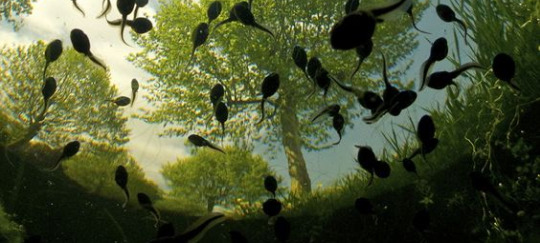
Little Gifts (Fairies AU) - Chapter 40 - Galloping Ponies - Part 1
MY OTHER WRITING
Badump – badump – badump – badump -
“I will always love you, my Little Prince, my brave little warrior, I will always keep you in my heart. I will come back. Wait for me.”
Badump – badump – badump –
Fili squished Boniface the Tailless Rag Pony tighter to his chest and rolled to his other side, pulling his toy with him. He wished Boniface would stop galloping so loudly when Fili was trying to sleep.
He didn’t stir when a soft fur was pulled higher over his shoulder and the delicate kisses were pressed to his hair.
“I’ll come back.”
Badump – badump – badump - badump –
---
The following morning, over a plate of his favourite hot corn cake with maple syrup, Fili learned that he was going to have a brother or sister.
“Amad has gone far, far away,” Adad said, pulling little Fili into his arms, while the boy pulled Boniface into his, “but she will be back when the baby is hatched. She will return before the autumn has settled in for good.”
Fili considered this new piece of information. A new sibling meant a new playmate. It meant that Fili would no longer be so little (by comparison) and that he could introduce them to all the other dwarflings. It would be like having a friend who was allowed to stay overnight every night.
“Okay,” Fili eventually allowed, nodding seriously while his father watched his face with a mixture of worry and pride. He would be brave for Adad, who would surely miss Fili’s mum terribly, would forget to feed their beetles, water her favourite forget-me-nots and feed him anything other than treats.
Fili was practically his only hope of survival.
It was early spring when they ate the corn cakes and spoke of new toys and sharing beds and the summer which followed kept going on and on until it was the longest in Fili’s memory.
Read more
16 notes
·
View notes
Note
What is Earth 37's Atlantis like?
1. I’m keeping the idea that Atlantis was originally twelve cities across a continent, with probably a lot of smaller towns and villages in between, and that of those twelve cities only two have survived - the capital city of Poseidonis and its sister-city Tritonis. As the names would imply, Atlantis is noted for having followed the ancient Greek gods, and to have been specifically devoted to the god Poseidon, god of the sea. Unlike, say, Themiscyra, most people in Atlantis do follow Poseidon only, even while acknowledging the existence of the rest of the pantheon. There are dissenting sects, obviously, but Poseidon is still the most widely-worshipped god within either city.
2. The two greatest divides between Poseidonis and Tritonis are that Poseidonis is noted for having favoured technology and its denizens are primarily bipedal, Tritonis prefers to rely on magic and is inhabited by merpeople. Regardless, about six centuries ago the two cities were unified under one ruler once again, although there are still racial tensions between tailed and tailless Atlanteans and a serious cultural bias against the Tritonian minority in Poseidonis.
3. It was only recently, under the rule of King Orin, that Atlantis became known to the wider world, a few years before Themiscyra also started making its first steps onto the world stage. This led to a fair bit of re-examining of most of world history, particularly during the ancient period, but also some serious shifts in world politics. For a start, here was a massive, untouched nation beneath the sea who were seriously objecting to ocean pollution and quite willing to cause trouble over it. And who had, just to complicate things a bit more, good enough technology that it could lead to a tech revolution in clean energy if they shared it with the wider world.
4. Atlantis has been in effect an absolute monarchy for centuries, although one advised by a ruling council. As such, the monarch’s decisions have great impact on every aspect of life in Atlantis and assassination or usurpation have been, historically, two of the most effective ways of changing unpopular policies for most of its history. King Orin attracts rather more such plots than many of his predecessors due to his decision to reveal Atlantis’ existence to the outside world and open up diplomatic relations with the surface, a set of decisions regarded with some trepidation by several groups within Atlantean society, and by his own half-brother Prince Orm.
5. Despite this push towards greater openness towards the outside world, Atlantis is still fairly isolationist by most surface countries’ standards. Yes, they will trade and have diplomatic relations with the wider world, but visits between the two are uncommon, tariffs are high and they have expressed little interest in closer alliances.
5 notes
·
View notes
Text
Book Review #3

Title: Ananse in the Land of Idiots
Author: Yaw Asare
Genre: Drama
Year published: 2006
Publishers: Accra, Ghana: Kwadwoan Publishing.
Summary: In this story, Kweku Ananse, “Odomankoma’s Head-weaver; Master Craftsman in the Guild of Divine Craftsmen; Legend of Tailless Tales; One who manipulates creation from the fringers of a vibrant web; Hunter Extraordinary; Fellow of the Cult of Cosmic Linguists; Supreme Strategist; Odomankoma’s Mystery Messenger who flies the skies without wings and crosses rivers without a boat, ” (p. 2) travels to the land of idiots. This land seems to refer to the world. When Ananse arrives at this place, he is caught eating food that has been left as a sacrifice to the gods of the land. Ananse’s actions are viewed as a defilement of the land which could bring about a curse on the whole kingdom. To avoid a curse from the gods, the priestess of the land calls for the King to behead Ananse so his blood would appease the gods. Ananse, realizing his fate, gifts the king, queen, and elder three kente-woven headbands. The king is in awe of the finely woven masterpiece. Ananse promises to weave kente cloths for the princess and the prince who are soon to be married in exchange for his freedom. This leads to deception, seduction, and a murder that sees Ananse gain a chieftain, the princess as his wife, and many possessions from the land.
Reaction: I was surprised by how much information there was before readers get to the beginning of the play. There is a foreword Africanus Aveh, a section about the playwright, an introduction by James Gibbs, and a review by Professor A.N. Mensah from the Department of English at the University of Ghana. I wonder why all these people had to say something about the play. I refrained from reading most of these sections but I read the section about the playwright before reading the story. I realized why this book was so important to so many people. Yaw Asare, who originally wrote this play in the early 90s, passed away in 2002 at the age of 48. This story was one of his first works and his family and friends came together to put this in print to keep the Yaw’s memory alive. Yaw was a teacher, who majored in English and Theatre at the University and had a Masters in African Studies. He was about to start his PhD in folklore and performance theater when he passed away. Learning about the author beforehand gave me a profound appreciation for the text.
Yaw’s style of writing this play comes to life as he paints the picture as if you were in the audience watching the story unfold on stage. In the beginning of the 1st movement (what others might call act), Kweku Ananse directly talks to the audience as if they were part of the story. Kweku Ananse is angry with the audience:
You have turned my hard-won fame into titles of notoriety “Ananse-the-Tickling-Trickster” “Ananse the Cunning Crook” you call me. What praise names to give a hero? Such terrible appellations!... (p. 2)
Ananse in this story still deceives, manipulates, and outsmarts the people around. Ananse, however, views himself as “the prime custodian of ethical, moral, and philosophical norms. In the story, Ananse words, actions, and interactions with people reveal cultural and societal traditions and practices that must evolve to protect the vulnerable in society.
I was also struck by the use of local language and the lack of translation that was provided. These words in the Ghanaian language were also not italicized or boldened to show them as foreign but written just like they would be spoken by a Ghanaian. This shows also that the intended audience here is local and Ghanaian so when Kweku Ananse chants the audience know exactly how to respond.
youtube
0 notes
Text
Send me an au and I’ll give you 5+ headcanons about it
@thooru-chan sent ‘Legend of Zelda Broly x Trunks’. I struggled with it (LoZ is a *massive* playground), but I think I got it! Please enjoy! No set game universe.
1) They are from the tribe of the Saiyans; a rumored cousin tribe to the Gerudo. Instead of the desert though, they live deep in the hostile mountains and have the opposite problem to their supposed cousins: their tribe is almost completely male, with the rare woman here and there. The rumors about the Saiyans are just as vicious though: that they’re bloodthirsty bandits who prey on mountain travelers and nearby settlements, that they’re mindless savages, and of course, all the rumors about how they steal away women and all the awful things that happen to them. Rumors are just rumors though.....mostly.
Broly was born into the tribe, naturally, but his massive power, boosted by having Din’s blessing (a red starburst on his shoulder, outlined in gold to also indicate that he is a rare Chosen) soon isolate him and he is quickly pressed into temple service; guarding what is supposedly the Temple of Farore, where the Triforce of Courage is said to be hidden.
Trunks was not born into the tribe. No one even knows who his mother is; Vegeta went wandering to gain experience about the world and when he finally returned after a number of years, he had a little four-year-old with him. As the Prince dumped him into the communal nursery, all he said was “This is my son, Trunks.” It was the first and only time Vegeta explicitly claimed him as his son. Trunks, with his lavender hair and pale blue eyes, was quickly made an outsider. His blessing mark doesn’t help, a blue spiral on the back of his left hand, Nayru’s blessing, the only one among the tribe full of those blessed by Din or even Farore. The odd blessing, plus his obvious status as a rare half-Saiyan, causes many in the tribe to mock and even reject him.
Their statuses as outsides is what causes them to first find each other and a fast friendship soon forms.
2) This friendship evolves into love over time, as the years pass and they grow still closer together. They earn titles, though not completely honorable ones. Broly is mocked as ‘The Legendary’ or even ‘The Guard’ given his massive power that he doesn’t use in addition to being the one who’s held a position as temple guard the longest. Others would have found their way into the warrior barracks or into the exploration groups; Broly had found himself content with the temple and stayed, again to the mockery of other Saiyans.
Trunks is called ‘Princess’, again for a variety of reasons. He can’t be called ‘Prince’ because his father still holds that title and many view his smaller, softer form as ‘womanly’, in addition to his gentler temper and Trunks being more prone to try and talk a situation out first over just fighting it out. It’s still better than his other title, ‘The Bastard’. Vegeta still won’t claim him and still no one knows who his mother is. It’s far better still than ‘Tailless’.
To the Saiyans, tails are sacred. A tailless Saiyan isn’t considered a ‘true’ Saiyan. Trunks, who hadn’t been born with a tail, has endured this rejection all his life. He grows his hair long instead, down to his waist, and often wears it in a low ponytail or a loose three-strand twist braid. Very few realize this is his attempt at a tail of his own. Broly is one of the very few and when they’re alone, he’ll let his tail hold onto Trunks’ braid or ponytail, first in companionship, later in love. (King Vegeta, Trunks’ grandfather, realizes it as well, but never says anything about it.)
When Broly finds out that Trunks is planning to leave the village, to try and find his mother and learn about the rest of his family, the larger Saiyan immediately offers to go with him without hesitation. It’s the deepening point in their relationship, when friendship evolved into love.
3) Trunks enters temple service to both spend more time with Broly and to get away from Vegeta. It also gives them the time and privacy they need to plan their departure. It is during one of their examination rounds, to make sure the temple grounds are stable and whole, they come across an unconscious traveler. A strange boy wearing green with golden hair and, once he awakes later in one of the temple rooms, brilliant blue eyes. He is marked by Farore and also one of her chosen (a green leaf over his heart, edged in gold, he shows them readily when they ask.)
He doesn’t speak but they find a way to communicate; his name is Link and he’s on a journey to find the Triforce of Courage. He needs it to defeat a great evil, led by Ganondorf of the Gerudo tribe. It’s sobering and heavy news. Trunks decides to bring it to both Vegetas for consideration; plus Link would need the permission of King Vegeta to enter the temple. No one can go in without it, not unless they work with the temple service and even then, there are some rooms that will not open without the King’s permission.
It’s a disaster that snowballs unexpectedly into a bigger one; King Vegeta is dismissive of the news and refuses permission to Link to enter the temple. Prince Vegeta sneers and comments how the Saiyans have no need to worry about some little upstart from the desert; they’re *Saiyans*, what could ever pose a threat to them?
Then the bigger disaster: Paragus, an adviser to the King and a well-respected veteran of the tribe, betrays them. He’d been working with Ganondorf in secret, planning to hand over the Triforce of Courage in exchange for becoming the new King of the Saiyans. In exchange for his cooperation, Paragus had been given a magical artifact set: a crown and hand ring; whoever wore the crown would be controlled by whoever wore the hand ring. Paragus forces Broly to wear the crown and sends him to kill Link.
Broly fails when Trunks stands between them; he cannot hurt Trunks, even in his mind-controlled rage state. So Paragus forced Broly to fall back into the temple, where Paragus is searching for the hidden Triforce piece. King Vegeta, still in shock at the destruction Broly had caused, finally gives Link permission to enter the temple.
Trunks goes with him and no one dares stop him.
4) The temple is tricky but they manage. It forces a person to focus on tactics and strategy over sheer brute strength. At one point Trunks makes a comment about how it’s no wonder the Saiyans never really bothered to venture through it and Link silently laughs with him.
They find Broly deep in the temple, in a room that holds a statue of Farore suspended above a seemingly endless chasm, her hands cradling a stone triangle. Paragus had forcibly kept him in an enraged state and Broly is half-mad from the uncontrollable power. The ensuing fight is hard and horrible but they pull through, somehow.
It’s costly though; Trunks had taken several blows for Link, who isn’t Saiyan but Hylian, who isn’t as physically sturdy as even a half-Saiyan like Trunks. The last blow he took put him in one of the temple walls and he stayed there, unconscious and coughing blood. The sight of the blood gets to Broly and he starts to regain his reason, horrified at what he has done, even if he was made to do it.
Paragus reveals himself then, having found the Triforce of Courage, though it rejects him. The power Ganondorf gave him goes wild and takes Paragus over, driving him mad with it. He goes to kill Trunks, cackling that the new age for the Saiyans shall begin now with the death of the filthy whelp. Broly meets him fist for fist, his rage and power breaking the control crown.
If Link thought the first battle was hard, watching the two Saiyans fight is on a whole new level. They destroy the temple around them and Link is quick to try and pull his new friend to safety. How they survive through it is a miracle that Link doesn’t question.
Broly kills his father, crushing him with some of the temple’s rubble. They think it is done with, but then the temple starts crumbling around them. Trunks, having regained consciousness, uses the last of his strength to literally throw Link to safety as the platform they’re on crumbles. He falls into the chasm and Broly throws himself after him. The last Link sees of them is the pair falling together into the darkness.
5) After claiming the Triforce of Courage, though he doesn’t feel worthy of it, Link tries to find them. It takes what feels like days to navigate the lower parts of the temple, the areas most likely to be connected to that chasm and eventually he does find something: a Saiyan tail and a purple braid, left just inside the doorway of a side entrance to the temple; in the snow outside are fading footprints of a single person. There’s a heavy finality to the situation that Link can’t describe but he takes both items back to the Saiyan village.
King Vegeta accepts the tail and braid with a tight-lipped silence that speaks far more than it should. Prince Vegeta is pale but also silent. They send Link away with a blessing of the Saiyans and an offer to return if he’d like. As he leaves, Link vows to say nothing of the sounds coming from behind him, the ones that sounds suspiciously like sobs and angry swearing.
6) Link meets them again, months later, traveling through the land to try and find a sacred artifact to allow him to open the doors of one of the sage temples. Trunks wears his hair short now and Broly is still quiet but it’s a far more peaceful silence now. They’re on a journey of their own now, not just to find Trunks’ mother but also to see the world as it is beyond the mountains. They give him a communication charm to let Link contact them if he ever needs their help. Link wishes them well and hopes they can heal from the past.
7) When they find him, Goku unintentionally hurts them both here, for a variety of reasons. He’s powerful but controlled, has a loving and close-knit family with his non-Saiyan wife and father-in-law and his half-Saiyan children, and is warm and friendly to the point of near-obnoxiousness.
They have to leave quickly but slowly, so slowly develop a close friendship with Goku and his family. It is through Goku that they finally find Bulma, who holds her lost son tightly while crying and accepts Broly just as easily. It’s a warm and nice change from before.
13 notes
·
View notes